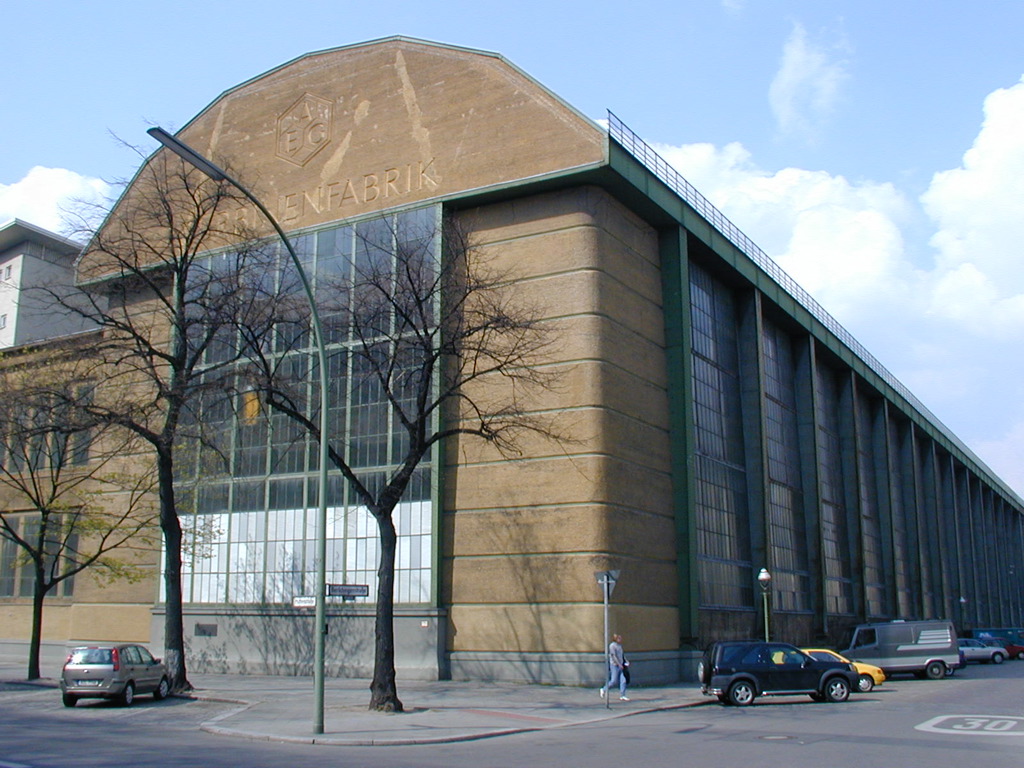Tectonics (architecture) on:
[Wikipedia]
[Google]
[Amazon]
 In modern
In modern
 In modern
In modern architectural theory
Architectural theory is the act of thinking, discussing, and writing about architecture. Architectural theory is taught in all architecture schools and is practiced by the world's leading architects. Some forms that architecture theory takes are t ...
, the tectonics is an artistic way to express the corporeality of a building through architectural form In architecture, form refers to a combination of external appearance, internal structure, and the Unity (aesthetics), unity of the design as a whole, an order created by the architect using #Space and mass, space and mass.
External appearance
Th ...
s that reflect the actual structure. An example of the use of tectonics and its opposite, ''atectonics'', can be found at the AEG turbine factory: Peter Behrens
Peter Behrens (14 April 1868 – 27 February 1940) was a leading Germany, German architect, graphic and industrial designer, best known for his early pioneering AEG turbine factory, AEG Turbine Hall in Berlin in 1909. He had a long career, desi ...
, the architect, had applied tectonics by revealing the steel frame that supports the roof on the long side of the building, and used atectonics by constructing massive "Egyptian-like" walls in the corners that are not connected to the roof and thus conceal the actual load and support organization of the frontal facade.
The tectonics, "poetics
Poetics is the study or theory of poetry, specifically the study or theory of device, structure, form, type, and effect with regards to poetry, though usage of the term can also refer to literature broadly. Poetics is distinguished from hermeneu ...
of construction", has multiple related meanings.
Tectonics is inseparable from the physical nature of buildings and thus counteracts external influences of other visual arts on architecture.
History
The word "tectonic" comes from , "carpenter, builder" that eventually led tomaster builder
A master builder or master mason is a central figure leading construction projects in pre-modern times (a combination of a modern expert carpenter, construction site supervisor, and architect / engineer).
Historically, the term has generally ref ...
, (now architect
An architect is a person who plans, designs, and oversees the construction of buildings. To practice architecture means to provide services in connection with the design of buildings and the space within the site surrounding the buildings that h ...
). First application to modern architecture belongs to Karl Otfried Müller
Karl Otfried Müller (; 28 August 1797 – 1 August 1840) was a German professor, scholar of classical Greek studies and philodorian.
Biography
He was born at Brieg (modern Brzeg) in Silesia, then in the Kingdom of Prussia. His father was a c ...
, in ''Handbuch der Archaologie der Kunst'' (Handbook of the Archeology of Art, 1830) he defined the art forms that combine art with utility (from utensils to dwellings) as , with the architecture being the peak of this ''tectonic'' activities. Karl Botticher in his ''Die Tektonik der Hellenen'' (The Tectonic of the Hellenes, 1843-1852) suggested splitting the design into a structural "core-form" () and decorative "art-form" (). Art-form was supposed to reflect the functionality of the core-form: for example, rounding and tapering of the column should suggest its load-bearing function. ''Tectonic'' system was supposed to bind these multiple facets of a building (Greek temple) into a unified whole (for example, through relief sculpture
Relief is a sculptural method in which the sculpted pieces remain attached to a solid background of the same material. The term ''relief'' is from the Latin verb , to raise (). To create a sculpture in relief is to give the impression that th ...
s using structural elements as framing).
Atectonics
Atectonics is an inverse of tectonics, a situation where the artistic appearance of the architectural form is detached from its structure and construction. Eduard Sekler introduced the concept of atectonics in 1911 as the arrangement where the interplay between load and support is "visually neglected or obscured". An architect can use both the tectonics and atectonics simultaneously (cf. the AEG turbine factory example above). Even if the construction and structure are interdependent and exposed, like inthe Crystal Palace
The Crystal Palace was a cast iron and plate glass structure, originally built in Hyde Park, London, to house the Great Exhibition of 1851. The exhibition took place from 1 May to 15 October 1851, and more than 14,000 exhibitors from around ...
, there is some space left for the atectonics (while the columns in this building carried different loads, they all appeared to be of the uniform width, with load variations accommodated through the thickness of their walls).
References
Sources
* * * Architectural theory {{architecture-stub